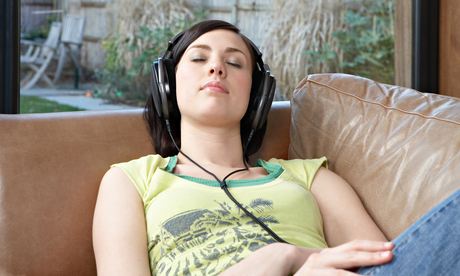
There is a fire extinguisher featured in Bridget Riley's latest artwork, unveiled earlier this week. Several in fact, given they are an obligatory part of the furniture in hospital corridors. And the 56 metres of this arresting mural, with characteristic horizontal lines in bold colours, adorn the 10th floor of St Mary's Hospital in London.
The charity that commissioned it, Imperial College Healthcare, reasons that the impact is therapeutic on staff as well as the more transient audience of patients. It says high-quality bold murals will offer distraction in surroundings often serially stressful – the ninth floor houses intensive care.
The Riley mural offers permanent adornment, but some 1,600 artworks owned by the charity now circulate among five hospitals in west and north-west London, carefully curated to reflect their surroundings; one paediatric wing shows animated films made by young patients encouraged by an artist with a six-month residency.
It is proof, if any were still required, that art therapies have become a mainstream partner to medicalised healing rather than a niche practice. There is no lack of empirical evidence that the making and viewing of art has produced important results in conditions as varied as depression and disability.
Music therapies, also now the subject of a raft of academic assessments, have produced some dramatic outcomes. The broadcaster Sally Magnusson has set up a charity in memory of her late mother, Mamie – a vivacious journalist and wife of the late Magnus Magnusson – whose dementia brought memory loss but also, heartbreakingly in a woman for whom words and their precise usage were a passion, an inability to string together rational sentences.
But, as her daughters found, what she could still do was sing. Sing the well-loved songs of childhood, family outings and celebrations. Playlist for Life helps similar sufferers by loading personalised musical memories on to an iPod to be played to them by families or carers. It's a pity, notes Sally drily, that among Mamie's total recall was every track from The Sound of Music, now lodged all too retrievably in her own memory.
The celebrated neurologist Oliver Sacks wrote extensively about this phenomenon in his 2007 book Musicophilia: Tales of Music and the Brain. His contention is that where musical memories are lodged in the brain is close to other areas that dementia or stroke victims are no longer able to access.
They lose, he says, "their autobiography", their identity, their story; but an evocative piece of music, the soundtrack to their earlier life, can retrieve not just the sounds themselves, but the events attached to them. And in so doing it can give both lethargic and agitated patients hours of peace and pleasure.
The UK-wide Music in Hospitals movement, which has professional musicians bringing entertainment to care homes and hospices as well, is clear that its performers must have highly developed social antennae to match their musical accomplishment. They need to understand and respond to varying temperaments and tastes.
Music as a balm for troubled souls has emotional potency. Severely autistic children who have an acute sensitivity to sounds – which may mean everyday noises like vacuum cleaners or phones cause distress – apparently respond well to musical loops where pleasing tracks offer both a sense of calm and a predictability which many on the autistic spectrum find comforting.
There is also the healing of wounds of a non-medical origin. When Liverpool's 2014 Biennial opens on 5 July, the inaugural concert will feature a Hillsborough Memorial symphony composed by Michael Nyman. No 11 Symphony is based on music he was composing as the tragedy unfolded. It will, undoubtedly, cause a fresh shedding of tears by the families of the 96 victims. But then tears are therapeutic too.
What all this tells us, not least at the moment when breasts are being routinely beaten over drug budgets, is that what were sometimes pejoratively dismissed as "alternative therapies" now have a proven track record in certain areas of medicine, especially where brain impairment is involved.
Art therapies and interventions are not resource neutral – not much is – but there are obvious bonuses. Giving mental respite to a disturbed child or a dementia-stricken adult through pleasure rather than pharmaceuticals has to be desirable wherever possible.
Inducing calm or a sense of achievement in patients instead of distress or frustration is a more than welcome outcome for carers and families, no less the daily victims of stress.

